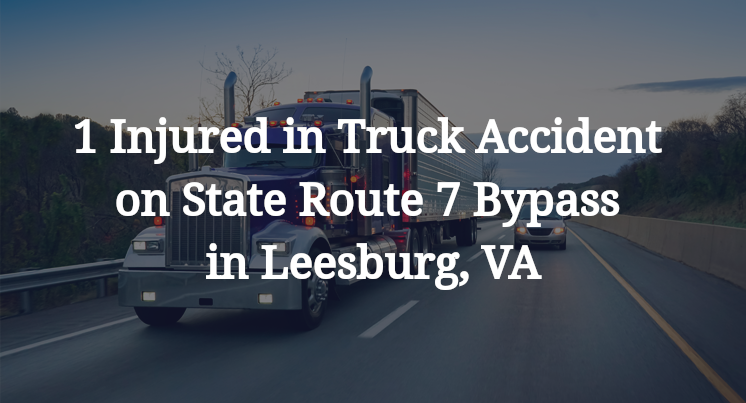1 Injured in Truck Accident on State Route 7 Bypass in Leesburg, VA
Leesburg, VA — June 13, 2025, one person was injured in a truck accident at about 2:15 p.m. on the State Route 7 Bypass/Leesburg Bypass.
Authorities said a septic truck collided with a dump truck twice while trying to pass it. Both vehicles left the road after the crash, with the septic truck overturning and the dump truck ending up in the trees on the embankment.

The septic truck driver, who said he lost steering and the front wheels locked up in the second collision, suffered non-life-threatening injuries in the crash, according to authorities. He was cited for having defective equipment.
No other injuries were reported.
Authorities have not released any additional information about the Loudoun County crash at this time. The accident is still being investigated.
Commentary
When folks read about a truck accident where one truck hits another twice while trying to pass, and both end up off the road, it naturally raises some serious questions. Why was the septic truck trying to pass a dump truck in the first place? Was it safe to do so? And if the driver says his steering locked up, what does that mean for how this crash really happened?
The fact that the septic truck driver was cited for “defective equipment” is telling, but that’s only one piece of the puzzle. Anyone who’s been around commercial trucking knows that trucks don’t just lose steering out of the blue. If the steering failed and the front wheels locked up, as reported, then we need to understand what condition the truck was in before the crash. Was the defect known? Ignored? Was the truck properly inspected before the driver got behind the wheel?
These are the kinds of questions that don’t get answered with a quick citation or a few lines in a crash report. They get answered by digging into records: maintenance logs, inspection reports, black box data and the driver’s statements. If the truck had an engine control module (ECM), it might show whether there were mechanical alerts before the crash or sudden steering input changes. If it had in-cab cameras, we might see whether the driver was struggling to maintain control, or doing something else entirely.
And let’s not overlook the employer’s role. If a trucking company allowed a vehicle with steering issues to hit the road, that’s not just a maintenance problem, it’s a policy problem. In my own work, I’ve seen too many cases where a company skips over proper inspections or hires drivers without checking their ability to handle a vehicle safely. That’s how you get trucks that shouldn’t be on the road causing crashes like this one.
For now, we have more questions than answers. It’s not clear whether the dump truck was moving or stopped when the septic truck tried to pass. That detail alone could change how we view the series of events. Was this a bad judgment call or a desperate maneuver after the truck began to fail? Depending on the sequence, the second collision and the resulting injuries could be the result of a much larger problem than just driver error.
Until investigators pull the data and evaluate the mechanical condition of both trucks, no one can say for sure who or what is responsible. But I’ve seen enough of these situations to know that a full investigation, not just a roadside citation, is the only way to get to the truth.
Key Takeaways:
- The cause of the septic truck's steering failure is a critical unanswered question.
- ECM data, inspection records and in-cab video could help confirm what happened before the crash.
- A citation for “defective equipment” suggests the vehicle may have been unfit for the road.
- The trucking company’s maintenance and hiring policies may need scrutiny.
- Full accountability depends on gathering and reviewing all available evidence.

“These are essential reads for anyone dealing with the aftermath of a truck wreck”– Attorney Cory Carlson